Our almost-final excursion on this very busy day was a cruise around Taiaroa Head.
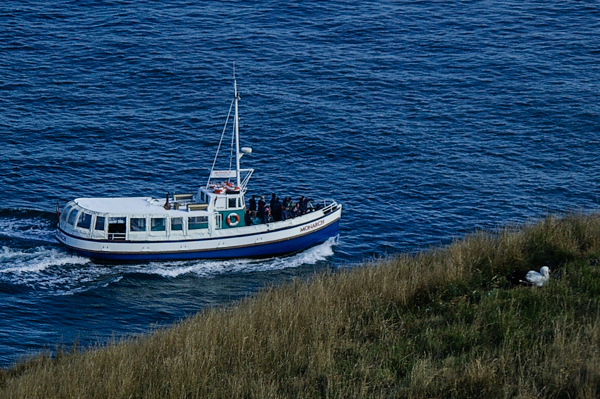
I had taken this picture of our boat, MV Monarch, earlier from the albatross colony. Now we were to have our turn.
You may imagine that I spent the entire time standing in the bow.
There were no bees.
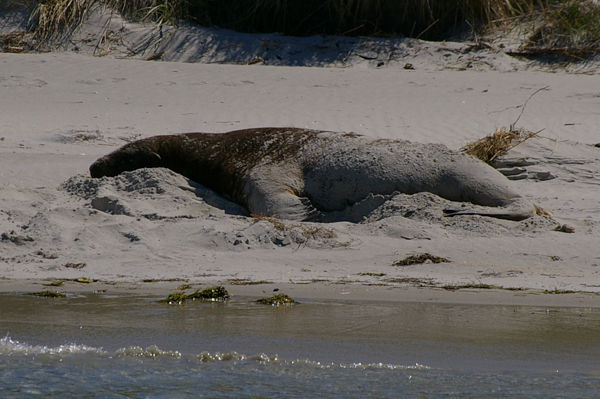
One of our first sights was this New Zealand Sea Lion hauled up on a beach to take a nap. It is also known as Hooker's Sea Lion.
The NZ Fur Seal, which is really a sea lion, and the NZ Sea Lion are different species. The Sea Lion favors sandy beaches like this one and seems larger than the Fur Seal.
They are the rarest sea lion species, but in 1993 a single female started to breed in this area and now her descendants are resident here.
This lay-about was in the same spot at the end of our cruise!
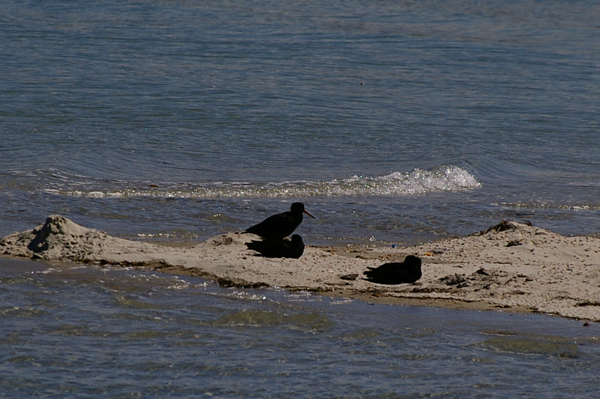
Our next sighting was a group of Variable Oystercatchers on a spit of the same beach.
These birds are found in several different colorations, which would certainly confuse me. They are more common on the North Island.
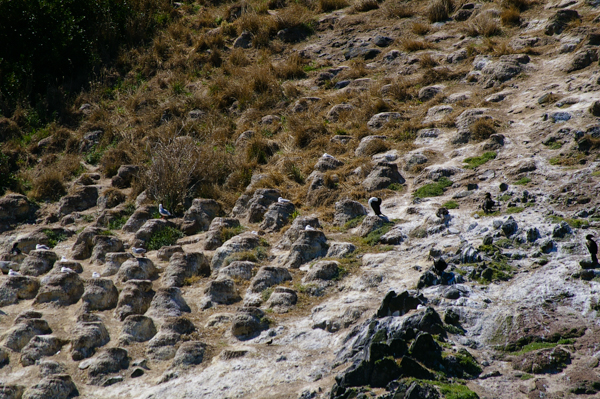
This is a nesting area of shags and gulls. Based on the type of nest, these are probably Stewart Island Shags, which in spite of the name, breeds in this area.
I can't identify the other birds from this picture. The only reason I know that the shags are there is that I saw them flying. The shag/cormorant has a very distinctive look in flight.
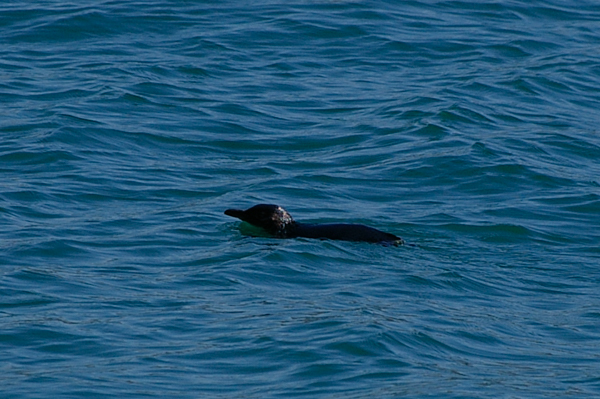 A
blue penguin in the water.
A
blue penguin in the water.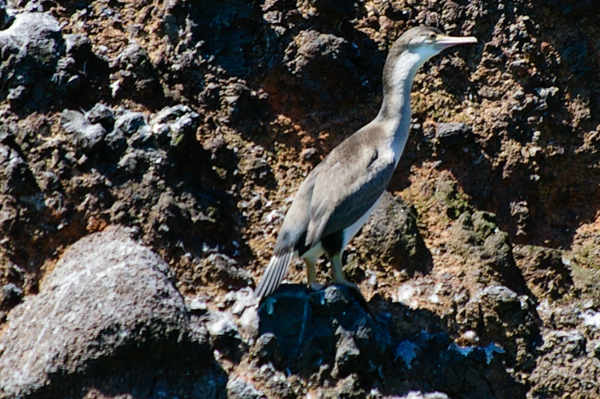
Probably a Pied Shag.
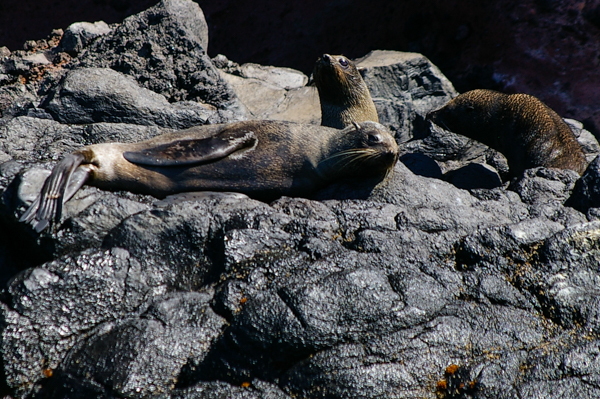
New Zealand Fur Seals sunning on the rocks. The guide on our boat said that they have the longest whiskers of any seals. The individual in front certainly has a moustache to be proud of.
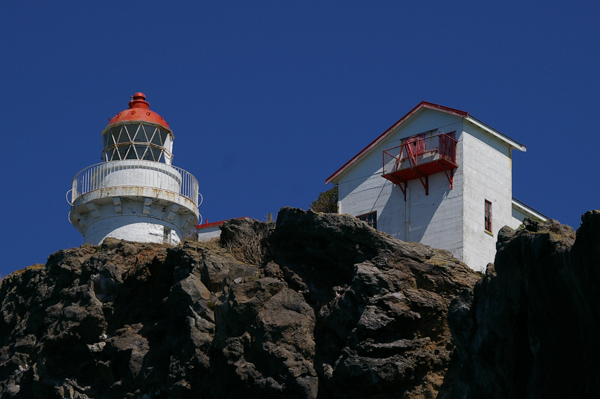
This lighthouse is located on Taiaroa Head not far from the "disappearing gun" emplacement. When we visited the gun, the guide pointed out a marking on the inside of the gun pit in the direction of the lighthouse. No one wanted t! fire the gun in that direction.
It dates from 1864.
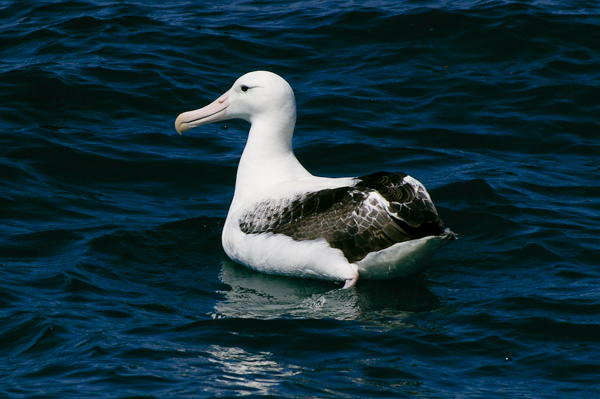
As we moved into the open ocean we were joined by albatross. Because of their size it is difficult for an albatross to take off unless there is a fair wind. It had been very calm all day, but there was starting to be a breeze.
I think this is a Southern Royal Albatross because of the amount of white on the wings.
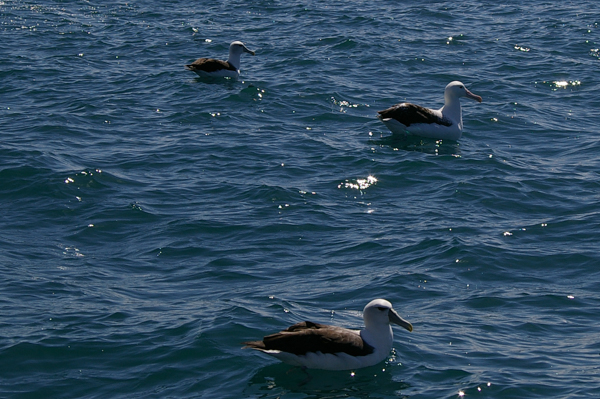
These birds show the completely black wing of the Northern Royal Albatross.
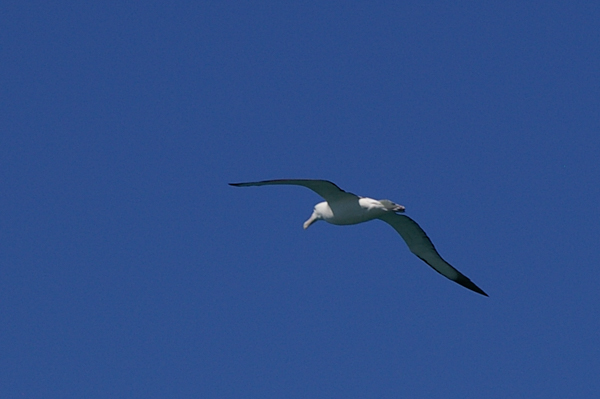
An albatross on the wing.
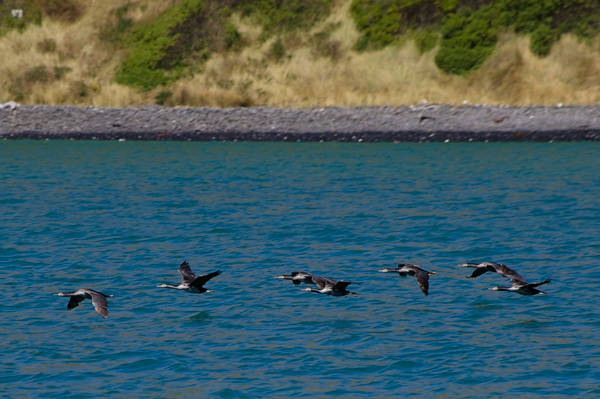
Shags ditto. Possibly Pied Shags.
We had a very fine afternoon watching the seabirds!
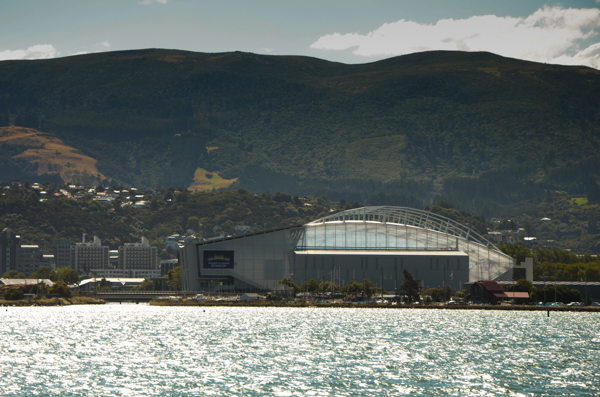
On the way back to Dunedin we passed the stadium hosting the cricket matches.
This covered stadium is award-winning and state of the art with a glass ceiling that allows natural turf to grow inside, but it has been controversial since its inception due both to its estimated cost and the inevitable cost overruns.
Not only did it go well over budget, but the rugby team that was to be its anchor has gone defunct leaving it with no long-term tenant.
Stadium madness isn't confined to US cities.
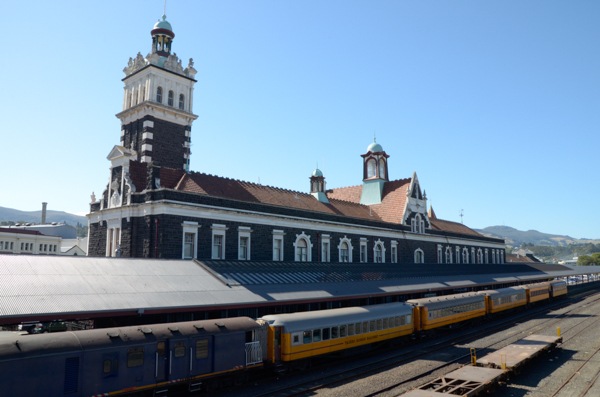
The last stop on the program was the Otago Settlers' Museum, but Jim & I were burned out. We heard it was well worth the visit.
Instead we walked past the train station on our way back to the hotel. It is a magnificent building, but only the tourist trains stop here anymore.
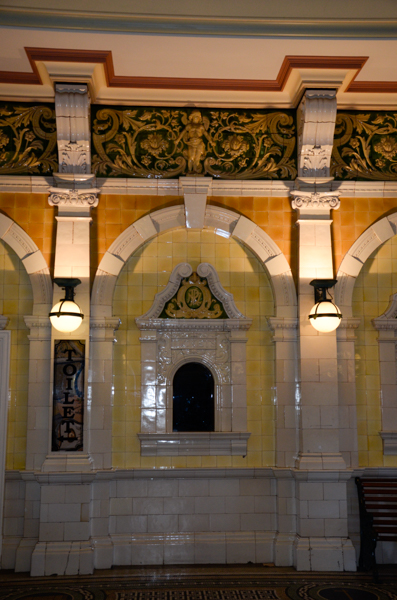
The interior was covered with Royal Doulton tile.
The ticket area was small, but magnificent.
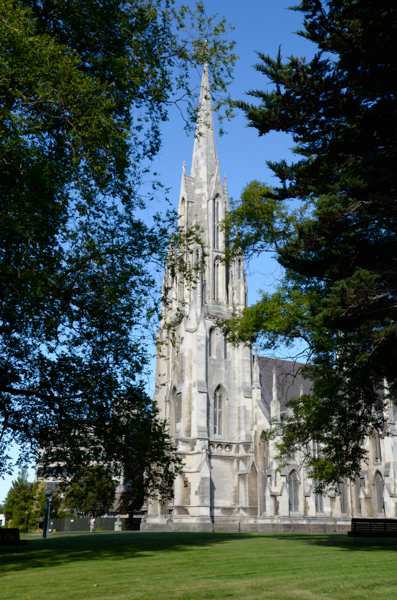
Another diversion on our walk back to the hotel was to the First Presbyterian Church.
Some day I might do some research to verify the things we were told about the Scottish Presbyterians and the settlement of Otago. Or not.
Dunedin has escaped destruction from both earthquake and urban redevelopment, and I would like to spend more time there. It was the one place I felt rushed.
Click your "back" button to return.